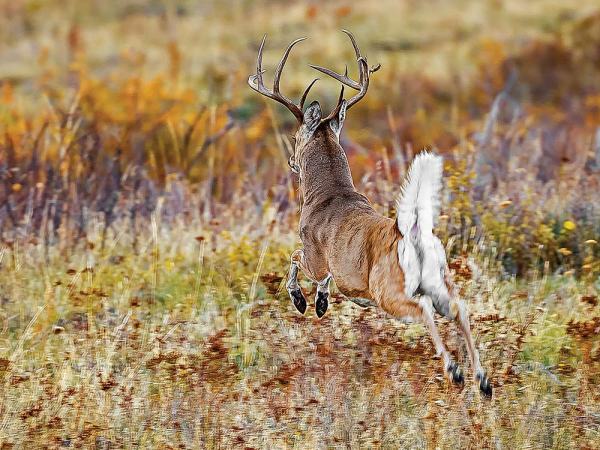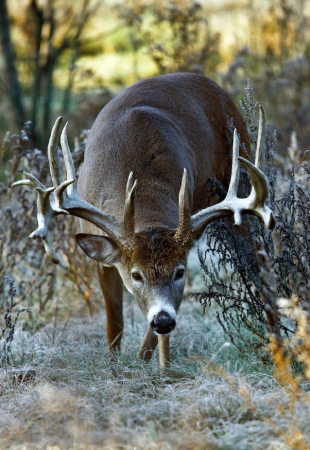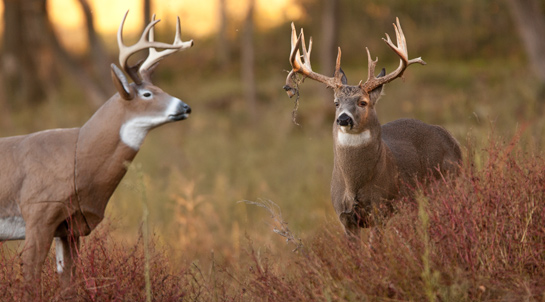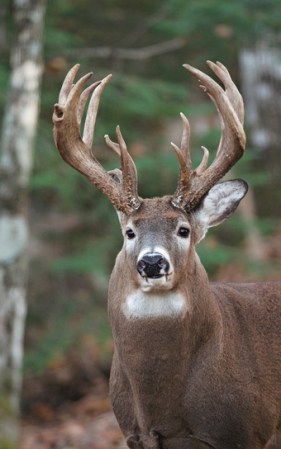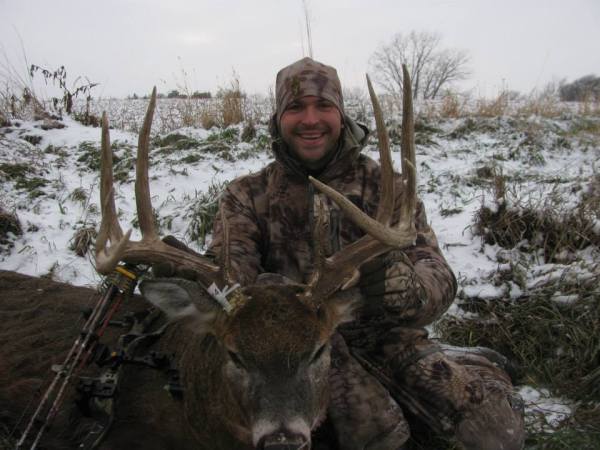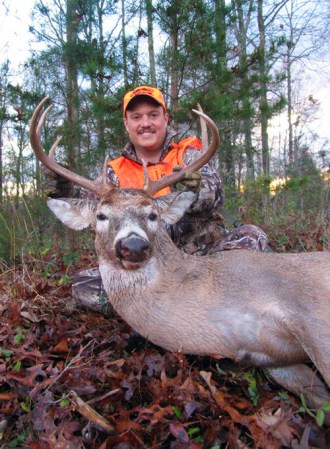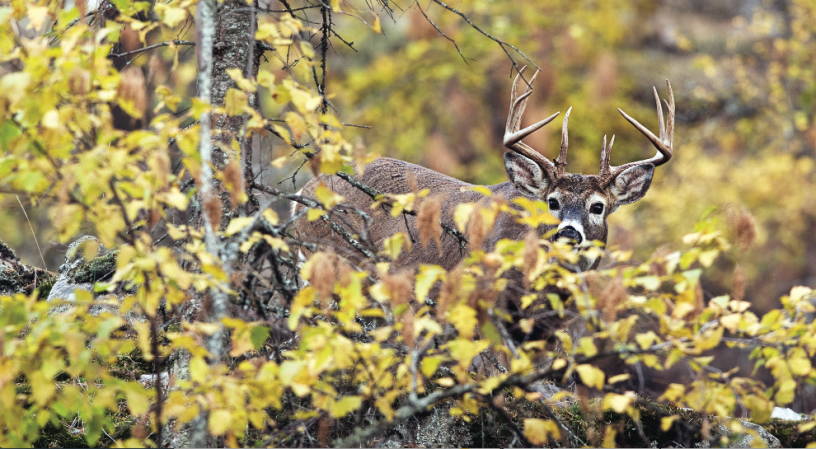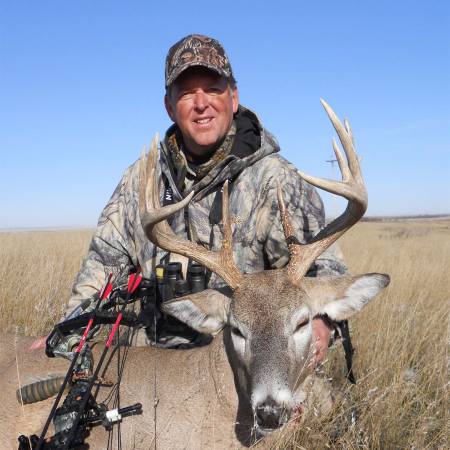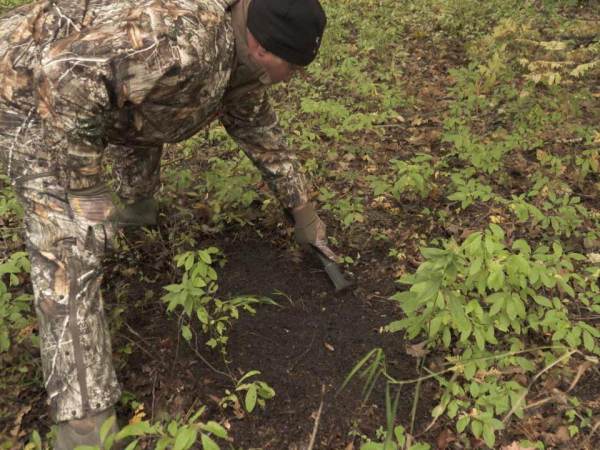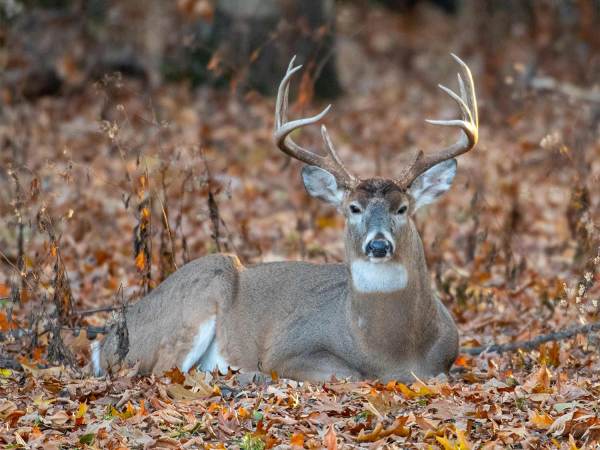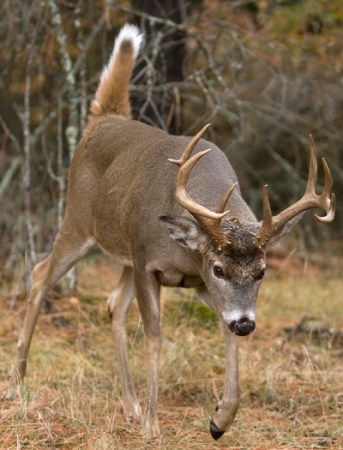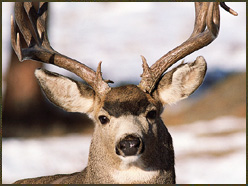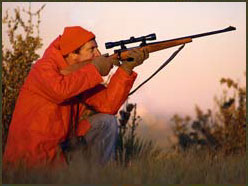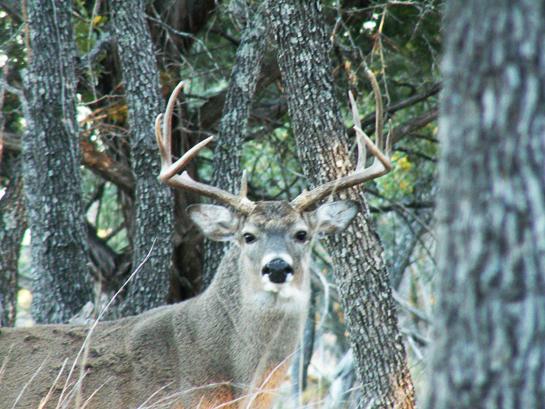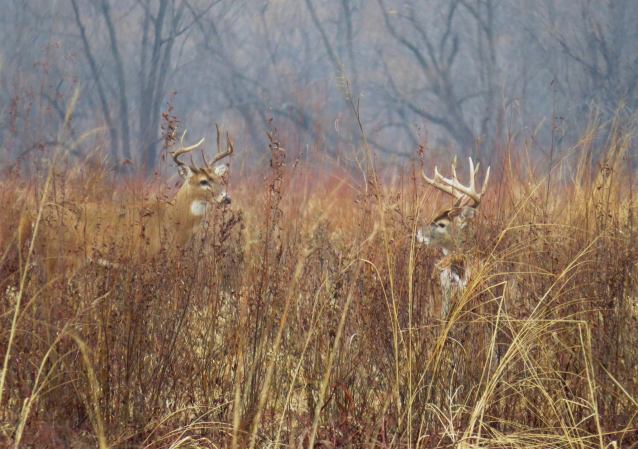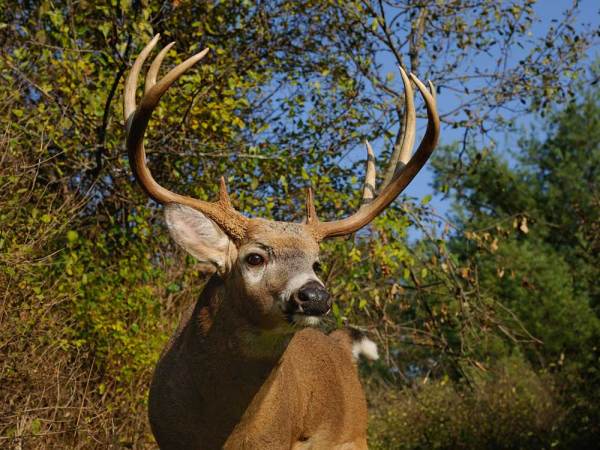Is your back stiff from sitting in your tree stand’s little seat? If you’re just itching to climb down and shake things up, you can go on the offensive. During the rut, bucks check bedding areas for estrous does during midday. They might lie down with the does for a few hours as well. The standard advice in this situation is to take a stand between bedding areas so that you can ambush bucks as they move to scent-check doe groups. That’s still good advice, but when done correctly, a more aggressive tactic can be more effective during the rut.
HIT AND RUN
When you climb down at 10 or 11 a.m., pull out an aerial photo or topographic map, pinpoint a few bedding areas, check the wind direction and plan a downwind approach. It’s prime time to rattle in a buck.
Western whitetail guide Dwane Kiehl is an old pro at this tactic. He explains, “The idea is to key in on bedding areas that are holding does, and then to stalk within 100 to 200 yards of the cover before calling. When you set up, it’s actually more important to be able to see to the sides and behind than it is to have a shooting lane directly in front. Bucks will circle downwind to pick up the intruding buck’s scent and see if an estrous doe is present.”
Wildlife biologist and Alabama outfitter George Mayfield, another believer in this tactic, advises, “Start by tickling the antlers together. You need to be careful not to spook any deer that might be close. After a quiet sequence, turn up the volume. You should rattle hard, make some deep grunts, break brush and stomp on the ground. Buck engagements during the rut are anything but civil. Because this can be very difficult from a tree stand, I prefer to stay on the ground when hunting alone.”
DOUBLE TEAM
Because it’s difficult for a bowhunter to rattle and shoot at the same time, Maine’s Dave Hentosh touts the value of the buddy system. His method is simple: One hunter has the calling duties and the other acts as the shooter. The caller slips in close to a bedding area and hides under a pine or in a thicket; the shooter takes up a position 30 to 50 yards downwind of the caller.
An advantage to this technique is that the shooter isn’t the focus of the responding buck’s attention; consequently, the shooter can draw without being seen. To accomplish this, however, both hunters must be as scent-free as possible. You should consider using doe-in-estrus scents as both a cover odor and a convincer.
To add further to the realism of the scenario, consider using a decoy that can be set up quickly and quietly. The decoy will draw in bucks that might otherwise hang up out of bow range.
If the first location doesn’t draw in a good buck, move to another likely area. You should be able to do two or three setups before it’s time to get back on stand in the afternoon. Why nap when the deer do, when you can stir up a little action?
THE SETUP
If you can get up a tree very quietly, you can use a climbing tree stand. If you are hunting by yourself and will also do the calling, you should use available cover and a piece of camouflage cloth to quickly construct a ground blind. Before you make a sound, you need to be sure you can draw on and shoot an approaching buck from either side. Also make certain there are no limbs in the way, note yardages to various points and decide when you’ll draw on a buck that approaches from either direction.

